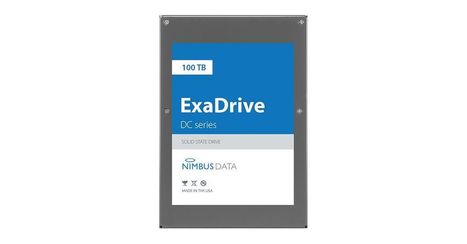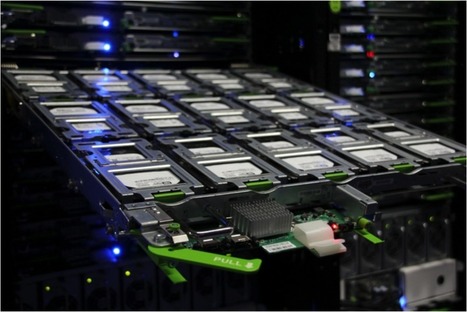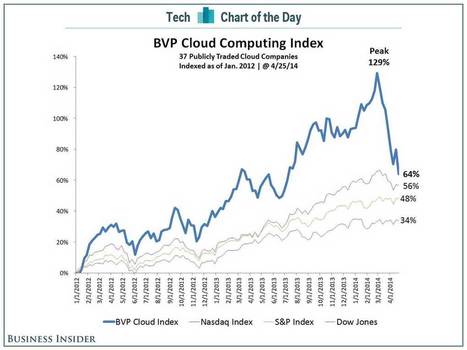 Your new post is loading...
 Your new post is loading...
After five years of offering unlimited free photo backups at “high quality,” Google Photos will start charging for storage once more than 15 gigs on the account have been used. The change will happen on June 1st, 2021, and it comes with other Google Drive policy changes like counting Google Workspace documents and spreadsheets against the same cap. Google is also introducing a new policy of deleting data from inactive accounts that haven’t been logged in to for at least two years. All photos and documents uploaded before June 1st will not count against that 15GB cap, so you have plenty of time to decide whether to continue using Google Photos or switching to another cloud storage provider for your photos. Only photos uploaded after June 1st will begin counting against the cap. Google already counts “original quality” photo uploads against a storage cap in Google Photos. However, taking away unlimited backup for “high quality” photos and video (which are automatically compressed for more efficient storage) also takes away one of the service’s biggest selling points. It was the photo service where you just didn’t have to worry about how much storage you had.
The world has a new record holder for the largest SSD, and it comes in at 100TB. The Nimbus Data ExaDrive DC100 is a new, massive drive that is currently being tested with select customers and will be available to purchase this summer. The company says the DC100 will utilize 3D NAND flash memory, which can provide enough capacity to store 20,000 HD movies, or 20 million songs, (if people still downloaded music), and is capable of read and write speeds of 500MB/s. Nimbus Data is also fully guaranteeing the drive for five years without restriction, so if your likely very costly drive kicks the bucket during that period you can get it replaced. As usual with these massive drives, they aren’t targeted at consumers, but they do give a glimpse into a near future that may allow us to never think about clearing up storage space on our computers.
The latest record is an incredibly low bid of 2.42 cents / kwh solar electricity in Abu Dhabi. That is an unsubsidized price. Let me put that in perspective. The cost of electricity from a new natural gas powerplant in the US is now estimated at 5.6 cents / kwh. (pdf link) That is with historically low natural gas prices in the US, which are far lower than the price of natural gas in the rest of the world. This new bid in Abu Dhabi is less than half the price of electricity from a new natural gas plant. What’s more, it’s less than the cost of the fuel burned in a natural gas plant to make electricity – without even considering the cost of building the plant in the first place. The solar bid in Abu Dhabi is not just the cheapest solar power contract ever signed – it’s the cheapest contract for electricity ever signed, anywhere on planet earth, using any technology.
Two billion photos are shared daily on Facebook services. Many of these photos are important memories for the people on Facebook and it's our challenge to ensure we can preserve those memories as long as people want us to in a way that's as sustainable and efficient as possible. As the number of photos continued to grow each month, we saw an opportunity to achieve significant efficiencies in how we store and serve this content and decided to run with it. The goal was to make sure your #tbt photos from years past were just as accessible as the latest popular cat meme but took up less storage space and used less power. The older, and thus less popular, photos could be stored with a lower replication factor but only if we were able to keep an additional, highly durable copy somewhere else. Instead of trying to utilize an existing solution — like massive tape libraries — to fit our use case, we challenged ourselves to revisit the entire stack top to bottom. We're lucky at Facebook — we're empowered to rethink existing systems and create new solutions to technological problems. With the freedom to build an end-to-end system entirely optimized for us, we decided to reimagine the conventional data center building itself, as well as the hardware and software within it. The result was a new storage-based data center built literally from the ground up, with servers that power on as needed, managed by intelligent software that constantly verifies and rebalances data to optimize durability. Two of these cold storage facilities have opened within the past year, as part of our data centers in Prineville, Oregon, and Forest City, North Carolina.
CloudGOO, a newly launched Android application with something of a silly name, offers a way for you to smush together all your cloud-based file storage accounts to form one big cloud drive in the sky. That is, the app aggregates your cloud drive accounts into one mobile interface, then uses that space as if it were one drive for things like automatic uploads of photos, videos, music, and documents. The new service was launched just days ago by Berlin-based developer Jared Preston, who previously spent a few years in Seattle working for Microsoft on the Windows Live platform, followed by some time at Deutsche Telekom. He explains that unlike other platforms, such as Jolicloud for example, which attempted to aggregate a user’s web services under one roof, the idea with CloudGOO is not to have you navigate between your drives or media spaces using the app. Instead, he says, “you simply access and use your stuff, no matter where it is stored.” “Theoretically, you could just hook up as many Google Drives, Dropbox, etc., as you wanted, to create a total space available for you to use. CloudGOO can then be set to ‘automatic upload’ and would just utilize the space available,” says Preston. “You would not have to worry about managing the space, just using it.”
"Other" content slowly eating up a significant chunk of iDevices available storage on iTunes
Several iDevices users have reported a steady yet significant inflation of device storage memory taken by "Other" content than Music, Photos, Videos, Apps, Books... Nobody seems to have a clue of what this "other" space is used for, nor how to bring it down to zero. Documented tricks like shutting down the iPhone, or performing a Save / Restore from iTunes won't let it go, at least on some iDevices including my iPhone and iPad. More intriguing, such space seems to be growing at each iTunes sync. On the above image you'll see a situation where "Other" now eats almost 1/3 rd of my total available space. What about you ?
It seems not too long ago that the storage industry was fragmented in terms of the "compute" layer in their storage systems. PowerPC, MIPS, Sparc and other platforms dominated the "pie chart" with x86 occupying a small share. Then something happened - all suppliers moved to x86 as a premise for commoditization of the storage platform. With vendors like Dell now testing low-powered ARM based servers and ARM releasing a 64-bit architecture, the question is how long before ARM becomes the platform of choice for storage vendors?
Face à une profusion d'informations de plus en plus hétérogènes et de moins en moins structurées, un des enjeux majeurs pour l'ensemble des acteurs économiques dans les dix ans à venir sera leur capacité à exploiter, analyser et transformer en valeur ces avalanches de données produites, et ce, si possible, en temps réel.
|
Thanks to the modern electric grid, you have access to electricity whenever you want. But the grid only works when electricity is generated in the same amounts as it is consumed. That said, it’s impossible to get the balance right all the time. So operators make grids more flexible by adding ways to store excess electricity for when production drops or consumption rises.
About 96% of the world’s energy-storage capacity comes in the form of one technology: pumped hydro. Whenever generation exceeds demand, the excess electricity is used to pump water up a dam. When demand exceeds generation, that water is allowed to fall—thanks to gravity—and the potential energy turns turbines to produce electricity.
But pumped-hydro storage requires particular geographies, with access to water and to reservoirs at different altitudes. It’s the reason that about three-quarters of all pumped hydro storage has been built in only 10 countries. The trouble is the world needs to add a lot more energy storage, if we are to continue to add the intermittent solar and wind power necessary to cut our dependence on fossil fuels.
A startup called Energy Vault thinks it has a viable alternative to pumped-hydro: Instead of using water and dams, the startup uses concrete blocks and cranes. It has been operating in stealth mode until today (Aug. 18), when its existence will be announced at Kent Presents, an ideas festival in Connecticut.
On a hot July morning, I traveled to Biasca, Switzerland, about two hours north of Milan, Italy, where Energy Vault has built a demonstration plant, about a tenth the size of a full-scale operation. The whole thing—from idea to a functional unit—took about nine months and less than $2 million to accomplish. If this sort of low-tech, low-cost innovation could help solve even just a few parts of the huge energy-storage problem, maybe the energy transition the world needs won’t be so hard after all.
Today, we are thrilled to announce that Infinit and Docker are joining forces. To anyone following the container space, this may not come as a surprise because persistent storage remains the number one challenge when it comes to container technologies. Still, for Infinit, this is a huge milestone, closing the loop that has taken the team through quite an incredible journey. Docker has changed the way developers work. By providing an ecosystem of tools based on container technologies, developers and operators have been able to gain in agility and security. At the same time, Docker has succeeded at reconciling operators and developers (through what has been dubbed the DevOps movement) by making them speak the same language. This whole revolution is still in its early stages even though both ends of the spectrum, startups and enterprises, have jumped on the train. Indeed, at this point, containers have been used primarily to deploy stateless applications because these can be stopped and relaunched easily, allowing for easy scalability. Unfortunately, this is no longer enough as developers want more. Namely, they want the ability to scale stateful applications, such as databases, as easily as their stateless counterparts. With stateful applications being the next natural step in this evolution, Infinit comes into play by providing the Docker community with a storage platform that is scalable, resilient and easy to deploy.
If you handle a lot of 4K video, you'll know that most available SD cards will struggle to handle all of your high-quality footage. The two-year old SanDisk 512GB SD card might take the edge off somewhat, but that isn't all that Western Digital, owner of the SanDisk brand, has got to offer. Today, the storage giant unveiled what it calls the "world's first" 1TB SD card. It's only a prototype, but already the company is touting the card's ability to adequately handle 4K, 8K, VR and 360-degree video when it officially becomes available.
This chart from Bessemer Venture Partners shows how far a basket of "cloud" stocks has fallen from their peak. The cloud index tracks 37 publicly traded companies. The cloud companies are still outperforming the broader market since 2012, but the trend doesn't look great.
Richard Kaner and his graduate student Maher El-Kady have been trumpeting graphene micro-supercapacitors that would combine the very fast charge and discharging capabilities of supercapacitors – hundreds of times faster than batteries – with the high energy density of batteries. Now the researches say they have demonstrated a scalable fabrication process that could make their supercapacitors cheap to produce while expanding the possibilities for their use. The UCLA researchers say they’ve been able to produce more than 100 micro-supercapacitors on a single disc in less than 30 minutes, using inexpensive materials. (image via UCLA) “We are now looking for industry partners to help us mass-produce our graphene micro-supercapacitors,” Kaner said in a statement.
Remember when you couldn't send video or audio files because of attachment size limits? That's history.
If you're a Gmail user, there's good news: You can now send files as large as 10 gigabytes.
If you're a Dropbox investor or employee, though, that's bad news.
The Web-based email service now integrates with Google's Drive storage system, according to ReadWrite's Jon Mitchell.
Users don't have to do anything to take advantage of this new feature. When you attach a file, Gmail will double-check that your recipients have permission to view the files in Google Drive.
Lexar Media says its industry-first 256GB SDXC UHS-I memory card provides the largest capacity for capturing, storing, and transferring high-quality images, as well as extended lengths of 1080p HD and 3D video content.
The UHS-I technology enables 60 megabytes per second minimum guaranteed sustained read transfer speed.
|



 Your new post is loading...
Your new post is loading...























4 selfies per human per week #4selfies : today more than 4 trillion photos are stored in Google Photos, and every week 28 billion new photos and videos are uploaded...